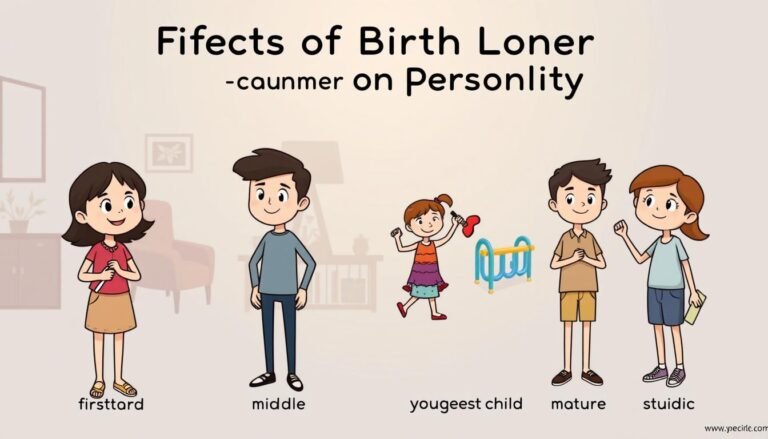Understanding Borderline Personality Disorder
Sarah’s emotions were like a storm. She could feel on top of the world one minute and then fall into deep sadness the next. Her relationships were also unpredictable, filled with ups and downs.
Borderline personality disorder (BPD) affects about 1.6% of adults in the U.S. Some think it could be as high as 5.9%. It usually starts in early adulthood and can greatly affect a person’s life and relationships.
Marsha Linehan, a well-known BPD expert, says people with BPD are like those with third degree burns over 90% of their bodies. This is how emotionally intense it can be.
The effects of BPD are huge. Up to 75% of those with BPD also deal with major depression. Even more shocking, about 75% have hurt themselves on purpose. These numbers show how critical it is to understand and treat BPD well.
Key Takeaways
- BPD affects 1.6% to 5.9% of the adult population
- Symptoms typically begin in early adulthood
- 75% of individuals with BPD also suffer from major depression
- 75% of those with BPD engage in self-harming behaviors
- BPD is characterized by emotional dysregulation and unstable relationships
- Effective treatments like Dialectical Behavior Therapy are available
What is Borderline Personality Disorder?
Borderline Personality Disorder (BPD) is a complex mental health issue. It changes how people think, feel, and interact. Those with BPD often face intense emotions and unstable relationships.
Definition and Core Characteristics
BPD is known for unstable personal relationships and self-image. Key traits include impulsivity, fear of being left, and identity issues. People with BPD may have quick mood swings and intense feelings.
Prevalence and Demographics
BPD affects about 1.6% to 5.9% of people. It’s more common in women and often starts in the teenage years or early twenties. BPD is seen more in psychiatric hospitals.
| Demographic | Prevalence |
|---|---|
| General Population | 1.6% – 5.9% |
| Gender | More common in women |
| Age of Onset | Teens to early adulthood |
Impact on Daily Life and Relationships
BPD can greatly affect daily life and relationships. People with BPD may struggle at work, school, and in social settings. They often fear being abandoned, leading to unstable relationships. Impulsive actions and mood swings make life even harder.
“Living with BPD is like being on an emotional rollercoaster every day. It affects every aspect of my life, from my job to my friendships.”
The Emotional Rollercoaster of BPD
Living with Borderline Personality Disorder (BPD) is like being on an emotional rollercoaster. People with BPD go through huge mood swings that can last for hours or even days. These mood swings can change from feeling extremely happy to feeling very sad, anxious, or ashamed.
Feeling empty all the time is a big part of BPD. This emptiness can make people act impulsively as they try to fill the void. Feeling intense anger is also common, often because of fear of being left alone or feeling rejected.
These mood swings can really mess up relationships and how people see themselves. Research shows that 70-80% of those with BPD have faced neglect or trauma. This can make their emotional struggles even harder.
| Emotional State | Duration | Potential Triggers |
|---|---|---|
| Intense Happiness | Few hours to days | Positive interaction, accomplishment |
| Deep Sadness | Hours to days | Perceived rejection, disappointment |
| Intense Anger | Minutes to hours | Fear of abandonment, criticism |
| Chronic Emptiness | Persistent | Lack of stable self-identity |
It’s really important to understand these mood swings to diagnose and treat BPD. Dialectical Behavior Therapy (DBT) has been shown to help. It teaches people to manage their intense emotions and find better ways to cope.
Recognizing the Signs and Symptoms
Borderline Personality Disorder (BPD) changes how people think, feel, and act. It makes them very sensitive and react strongly to small things. Spotting BPD signs early is key for help and support.
Emotional Instability and Mood Swings
Those with BPD quickly switch between emotions. They might feel happy one minute and sad the next. These mood swings are intense and hard to handle, leaving them feeling drained.
Fear of Abandonment and Relationship Challenges
A big part of BPD is the fear of being left alone. This fear makes them try hard to stay with others. They often have unstable relationships, quickly moving from loving to hating their partners.
Impulsivity and Self-Destructive Behaviors
Impulsive actions are common in BPD. This can include spending too much, using drugs, or taking risks with sex. Sadly, up to 75% of people with BPD hurt themselves or think about suicide.
Identity Disturbance and Self-Image Issues
People with BPD often have trouble knowing who they are. They might change their goals, values, or even their sexual identity often. This can make them feel empty and without direction in life.
“Living with BPD is like riding an emotional rollercoaster. One minute you’re up, the next you’re down. It’s exhausting, but with the right help, it gets better.”
Even though BPD symptoms are tough, it’s treatable. With the right therapy and support, many people learn to handle their symptoms over time.
Borderline Personality Disorder: Causes and Risk Factors
Borderline Personality Disorder (BPD) comes from a mix of factors. Childhood trauma is a big risk. Experiences like being abandoned, having a disrupted family life, and abuse can lead to BPD. Also, if your family members have BPD, you might be more likely to get it.
Brain changes are also important. Studies show that people with BPD have different brain areas for emotions and control. This might explain why they feel so intensely and act impulsively.
Environmental factors also play a part. Poor family communication and feeling abandoned as a child or teen can increase your risk. But, having these factors doesn’t mean you’ll definitely get BPD.
| Risk Factor | Impact on BPD Development |
|---|---|
| Childhood Trauma | Significant increase in risk |
| Genetic Predisposition | Higher likelihood among close relatives |
| Brain Changes | Altered emotion regulation and impulse control |
| Environmental Factors | Increased susceptibility |
Knowing about these causes and risk factors is key for early help and treatment of BPD. It shows how important it is to have supportive environments and deal with childhood experiences to manage this complex disorder.
Diagnosis of BPD: Criteria and Challenges
Getting a Borderline Personality Disorder (BPD) diagnosis needs a detailed mental health check. It’s tricky because of the disorder’s complex nature and possible other health issues.
DSM-5 Diagnostic Criteria
The Diagnostic and Statistical Manual of Mental Disorders (DSM-5) lists nine criteria for BPD. You need to meet at least five of these to be diagnosed. These include mood swings, fear of being left, and acting on impulse.
| Criteria | Description |
|---|---|
| Affective Instability | Frequent mood changes triggered by external events |
| Identity Disturbance | Unstable self-image or sense of self |
| Impulsivity | Potentially self-damaging behaviors |
Differential Diagnosis and Comorbidities
BPD often goes hand in hand with other mental health issues. This makes it hard to diagnose. Depression, anxiety, and substance use disorders often mix with BPD symptoms. This mix-up can lead to up to 40% of BPD cases being misdiagnosed.
Importance of Professional Assessment
Getting a correct diagnosis is key for good treatment. A skilled mental health expert should do a detailed check to tell BPD apart from other disorders. This might include interviews, tests, and looking at the patient’s history.
“Diagnosing BPD requires careful consideration of symptoms, their duration, and impact on daily life. It’s a process that demands expertise and patience.”
Because BPD is so complex, we need more research and better tools for diagnosis. This will help make diagnoses more accurate and cut down on mistakes.
Treatment Approaches for Borderline Personality Disorder
Borderline Personality Disorder (BPD) treatment usually combines psychotherapy and medication. Psychotherapy is key, with Dialectical Behavior Therapy (DBT) being a top choice.
DBT teaches mindfulness, emotion control, and how to interact with others. It includes weekly sessions alone and in groups. Cognitive Behavioral Therapy (CBT) also helps, by changing negative thoughts and actions.
Even though there’s no FDA-approved drug for BPD, doctors might use antidepressants or mood stabilizers. These are often paired with psychotherapy for better results.
Other proven treatments include:
- Mentalization-Based Therapy (MBT)
- Schema-Focused Therapy
- Transference-Focused Psychotherapy (TFP)
- Systems Training for Emotional Predictability and Problem-Solving (STEPPS)
How long treatment lasts varies, but many see big improvements. A team of doctors, psychologists, and social workers often work together.
| Treatment Type | Focus | Frequency |
|---|---|---|
| DBT | Mindfulness, emotion regulation | Weekly individual and group sessions |
| CBT | Core beliefs, behaviors | Weekly sessions |
| Medication | Symptom management | As prescribed |
With the right treatment and support, many with BPD see their symptoms lessen and life quality improve. Getting help early is key to managing this complex disorder.
Living with BPD: Coping Strategies and Self-Care
Living with Borderline Personality Disorder (BPD) can be tough. But, using the right coping strategies and self-care can really help. People with BPD often have trouble controlling their emotions. This can cause big mood swings and impulsive actions.
Developing Emotional Regulation Skills
It’s key to learn how to manage your emotions if you have BPD. Skills in emotional regulation can lessen distress and stop harmful actions. Here are some good ways to do it:
- Practicing mindfulness to observe emotions without judgment
- Using deep breathing exercises to calm intense feelings
- Engaging in physical exercise to improve mood
- Listening to upbeat music to boost happiness
Building Healthy Relationships
Good interpersonal skills are important for keeping relationships strong. If you have BPD, you can benefit from:
- Open communication about thoughts and feelings
- Respecting others’ perspectives
- Setting and maintaining healthy boundaries
- Seeking support from trusted individuals
Practicing Mindfulness and Self-Compassion
Mindfulness and self-compassion are great for managing BPD symptoms. These practices can help you:
- Increase awareness of thoughts and emotions
- Reduce self-criticism and negative self-talk
- Develop a more balanced perspective on life challenges
| Coping Strategy | Benefits |
|---|---|
| Mindfulness | Reduces emotional distress, improves self-awareness |
| Exercise | Boosts mood, enhances emotional regulation |
| Social Support | Mediates stress and depression symptoms |
| Distress Tolerance Skills | Prevents emotional outbursts, improves stability |
By using these strategies every day, people with BPD can manage their symptoms better. This can greatly improve their life quality. Remember, getting professional help and support is crucial for better emotional health.
Supporting a Loved One with BPD
Caring for someone with Borderline Personality Disorder (BPD) can be tough. Family support is key to their recovery. Learning about the disorder and using effective strategies can help a lot.
Those with BPD often face relationship issues, making family members feel lost. Having stable support at home can help them get better faster. It’s hard to spot BPD symptoms, as small things can cause big reactions.
Setting boundaries is crucial when supporting someone with BPD. It’s natural to want to please them, but forgetting your own needs can burn you out. Talk clearly and consistently, and acknowledge their feelings without letting harmful behaviors slide.
- Listen actively to diffuse attacks and build stronger relationships
- Encourage treatment adherence, such as Dialectical Behavior Therapy (DBT)
- Practice self-care to manage your own stress effectively
Getting help for yourself is vital when caring for someone with BPD. Look for support groups, educational materials, and professional advice. These resources will help you handle this tough role.
| Effective Support Strategies | Benefits |
|---|---|
| Educate yourself about BPD | Better understanding and empathy |
| Participate in family therapy | Improved communication and coping skills |
| Maintain consistent support | Increased stability for your loved one |
| Set clear boundaries | Reduced stress and healthier relationships |
Recovery from BPD is possible with the right care and support. By being empathetic and setting healthy boundaries, you can help your loved one while keeping yourself safe.
Conclusion
Borderline Personality Disorder (BPD) is a complex mental health issue that impacts many lives. Since its discovery by Adolph Stern in 1938, our understanding has grown. It’s important to raise BPD awareness because it often goes hand in hand with other mental health problems like depression and anxiety.
The path to recovery from BPD is tough, but there’s hope. About half of those diagnosed see big improvements in 5 to 10 years. This journey includes managing symptoms, building strong relationships, and finding ways to cope. It’s key to remember that self-harm and suicidal thoughts are not the only paths.
Reducing stigma is crucial in supporting those with BPD. By spreading understanding and kindness, we can make a supportive space. With the right diagnosis, treatment, and support, people with BPD can live fulfilling lives. Let’s keep working to raise awareness, reduce stigma, and support those on their recovery path.
Source Links
- {OG: Title}
- Borderline Personality Disorder
- Borderline personality disorder – Symptoms and causes
- Borderline Personality Disorder
- Symptoms – Borderline personality disorder
- Borderline Personality Disorder
- An Emotional Rollercoaster: Understanding Borderline Personality Disorder | CHI Health
- Understanding Borderline Personality Disorder: Why Are My Relationships Like a Rollercoaster?
- Borderline Personality Disorder: BPD Symptoms, Signs, Help
- Borderline Personality Disorder (BPD)
- Borderline personality disorder (BPD)
- Borderline personality disorder: MedlinePlus Medical Encyclopedia
- Borderline Personality Disorder
- Diagnosing borderline personality disorder – PMC
- Borderline Personality Disorder – StatPearls
- Borderline personality disorder – Diagnosis and treatment
- Treatment – Borderline personality disorder
- What Works in the Treatment of Borderline Personality Disorder
- Healthy Coping Skills for People With Borderline Personality Disorder
- Self-management – Borderline in the ACT
- Helping Someone with Borderline Personality Disorder (BPD)
- 9 Strategies For Supporting Someone With BPD – CTRI
- Loving Someone with Borderline Personality Disorder: Top 10 Tips
- BORDERLINE PERSONALITY DISORDER – Borderline Personality Disorder
- Borderline Personality Disorder: Symptoms, Treatment, + TEST








